Media | Articles
6 things you didn’t know about Chrysler’s turbine car
When Stephen Stills wrote “For What It’s Worth” in 1966, he was referring to a protest gone wrong, but the chorus could easily have been used by Chrysler’s experimental turbine-powered car program from 1964. A car with a jet engine? That sounds absurd.
Chrysler did build a small batch of turbine-powered cars, though, and a few became part of everyday life for a handful of lucky consumers. Even in a time when technology was advancing regularly, Chrysler’s turbine car pushed forward the automotive industry and the United States.
In June of 2022, the Hagerty Drivers Foundation (HDF) inducted the Chrysler Turbine into the federally recognized National Historic Vehicle Register. A year later, HDF has created a thorough documentary including interviews with experts on the turbine-car project, from engineers who were there from the start to collectors who have spent years chasing the few remaining Turbines.
We pulled out a few of the highlights from the documentary, which goes live today. If you like what you read here, the full video is embedded at the bottom of the article. Grab a cold drink, sink into a good chair, and give it a watch.
Everything started with Project A-86
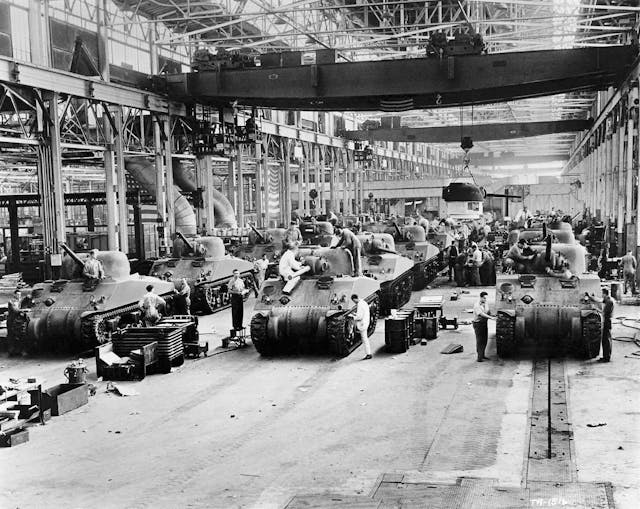
Just as WWII was ending, Chrysler finally finished a turboprop engine design codenamed A-86. Though jet engines made similar power to piston-powered ones, jet engines were far smaller and lighter, meaning that planes could be scaled up, perhaps even push right to the sonic barrier. When the need for aviation advancement became less urgent, Chrysler killed the project. Could we put the turbine engine in a car? the engineers wondered.
Marketplace
Buy and sell classics with confidence
Jet engines are incredibly space-efficient for a plane, but the turboprop didn’t immediately work in a car. The issues to solve were the same as you’d encounter when packaging any other powertrain: How to cool the engine, where to store the fuel, and which transmission to use.
It is not a jet car
A turbine-powered plane is pushed through the atmosphere by the force of the air exiting the turbine, or thrust. That wasn’t going to work well in vehicle traffic.
To make turbine power work on the streets, engineers added a second-stage turbine. Driven by the air coming out of the initial turbine, this second-stage unit also held a 10:1 gear reduction, which reduced the first turbine’s engine speed (40,000–50,000 rpm) to something a rear axle could accommodate. This second-stage turbine is the reason why the Chrysler is a turbine car, not a jet car.
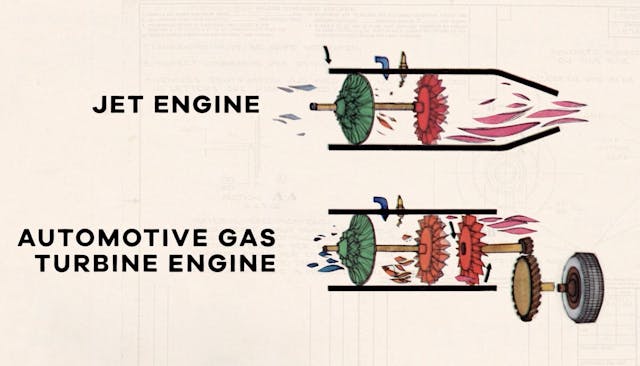
To make the Chrysler Turbine behave like users expected cars to behave, throttle response and fuel supply also had to be radically altered. What engineers did not have to deal with, though, was vibration. A turbine engine’s internal parts only rotate; they do not reciprocate.
It can run on just about anything combustible
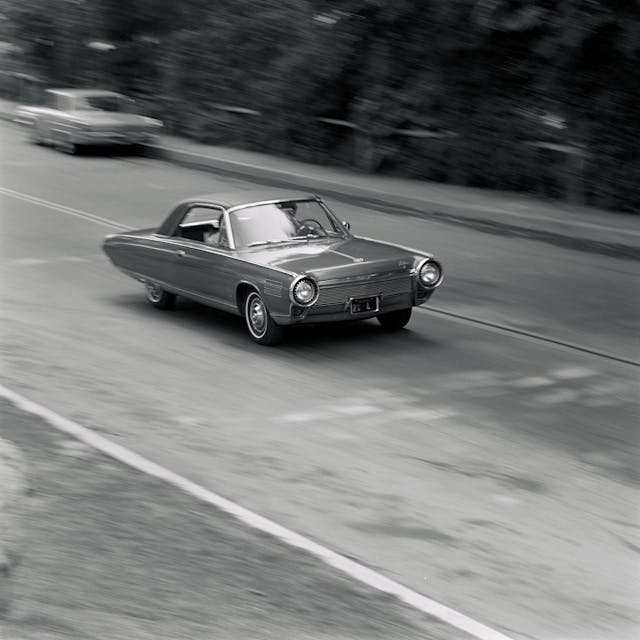
Unlike a piston engine, a turbine engine does not compress its fuel, so it can run on substances that would auto-ignite under compression or have trouble burning quickly enough for a short power stroke. Jerry Gross, one of the engineers from the Chrysler program, took one of the Turbine cars out to a peanut festival and fed it peanut oil. He said the car smelled like a restaurant kitchen but ran fine. Another story goes that, while in France, someone once ran the car on Chanel N°5. We would hate to see that bill …
Chrysler wasn’t the first to try turbine power

As early as 1949, Rover also had the idea to stuff a turbine powerplant under the hood of a car, so the post-war race to leave the piston behind became a match between the U.S. and England. Chrysler did not represent the U.S. alone: All the big auto manufacturers of the 1960s were experimenting with some type of turbine propulsion. It was Chrysler who went all-in, though, and created something more than a one-off show car. That investment made Chrysler’s efforts all the more memorable.

Real people got to drive them
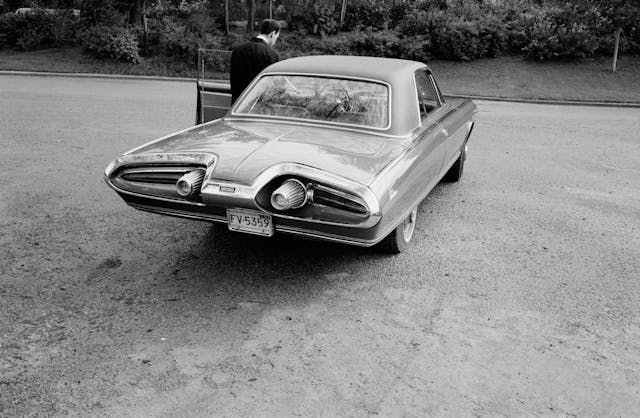
After the flurry of public relations stunts, in which Chrysler showed a few turbine cars at events across the country, the company took it up a notch by putting turbine cars in the garages of consumers. Not engineers. Not marketing people. Real-world users who lived with the car day in and day out for weeks at a time.
Engineers and designers can do a lot of testing, but those specialists think and drive differently than the average user does. Does the car have an adequate cooling system? Does it have the proper throttle response? How happily will it idle in traffic? All of these questions would normally be answered over months of testing, but Chrysler decided not to wait. In total, 203 lucky drivers got their own turbine car—Chrysler built 50—for three months. The cars were out in the wild, and people who paid attention could recognize one at a glance.
Not just bronze, Turbine Bronze
Chrysler didn’t really need the turbine cars to stand out visually, since the wild exhaust sound made it pretty obvious, but a little extra flair never hurt anybody.
The light-bronze color choice was safe enough to blend into ’60s traffic but unusual enough that the car would catch the public’s eye. The whole 50-car Turbine fleet wore this color. (Chrysler brought back Turbine Bronze in 2013 for a one-off 300C homage, but it wasn’t nearly the same.) The paint, the interior details, and the streamlined, jet-influenced silhouette all combined to be a subtle yet dashing car that is now forever documented as a critical piece of our automotive history.
***
Check out the Hagerty Media homepage so you don’t miss a single story, or better yet, bookmark it. To get our best stories delivered right to your inbox, subscribe to our newsletters.

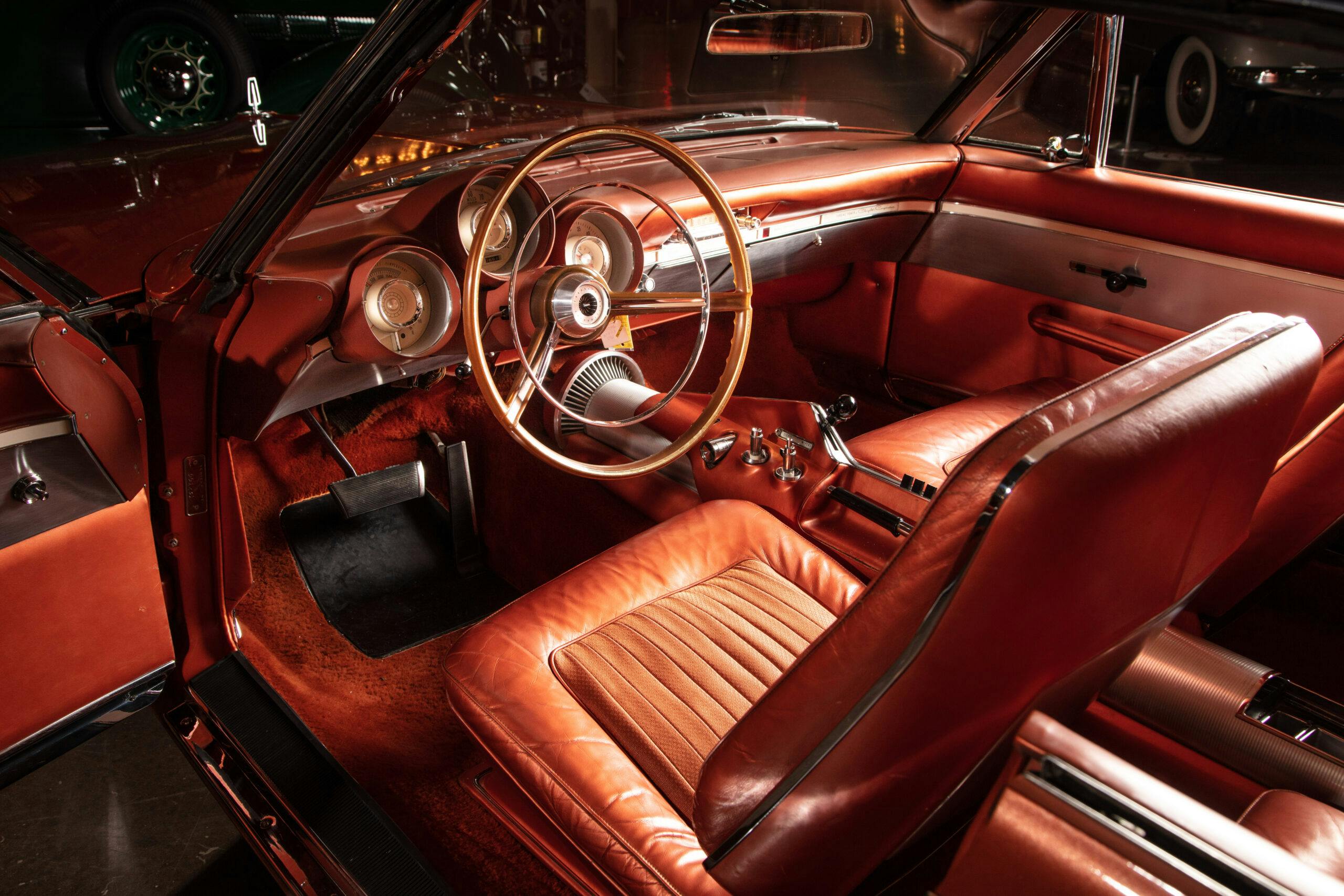
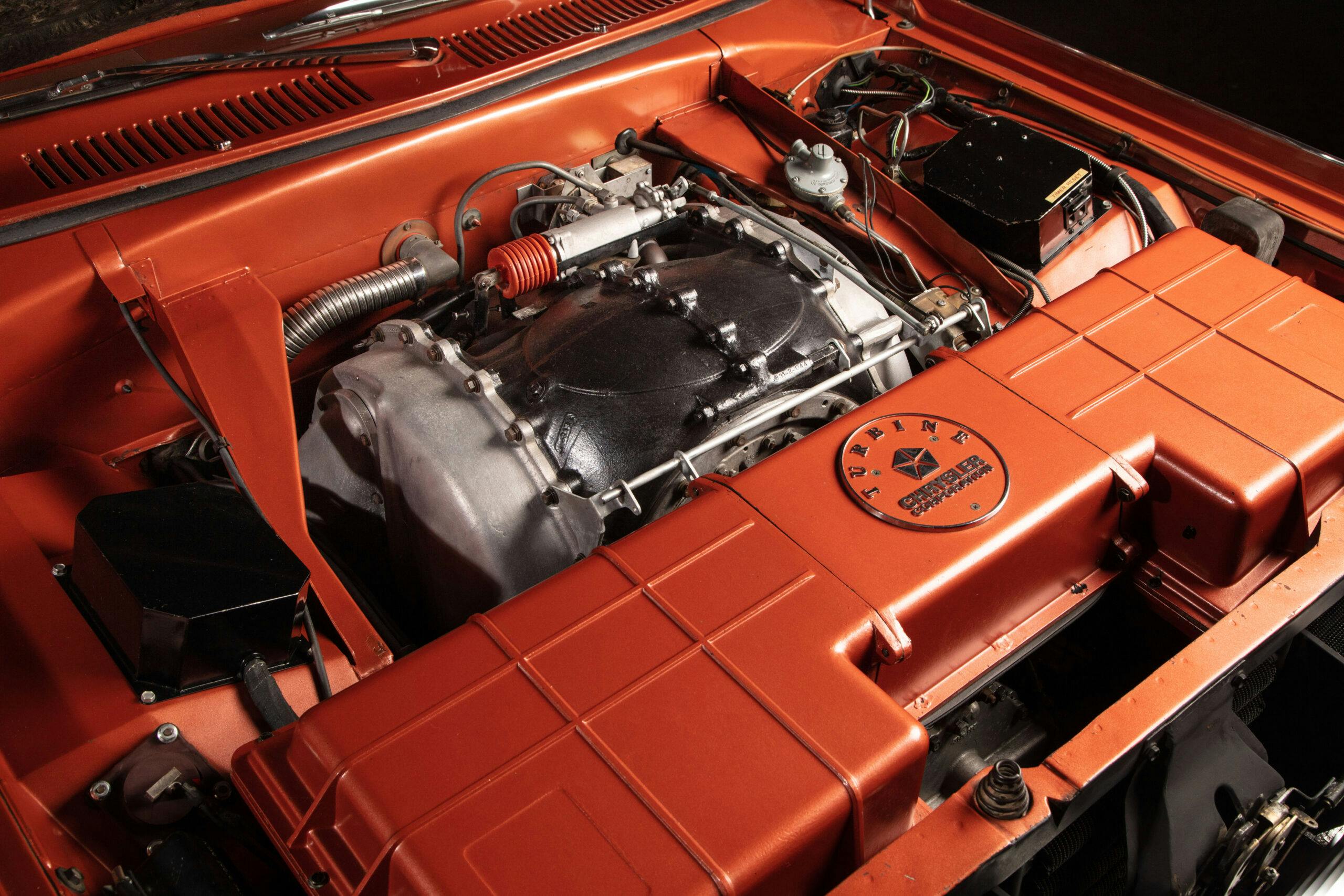








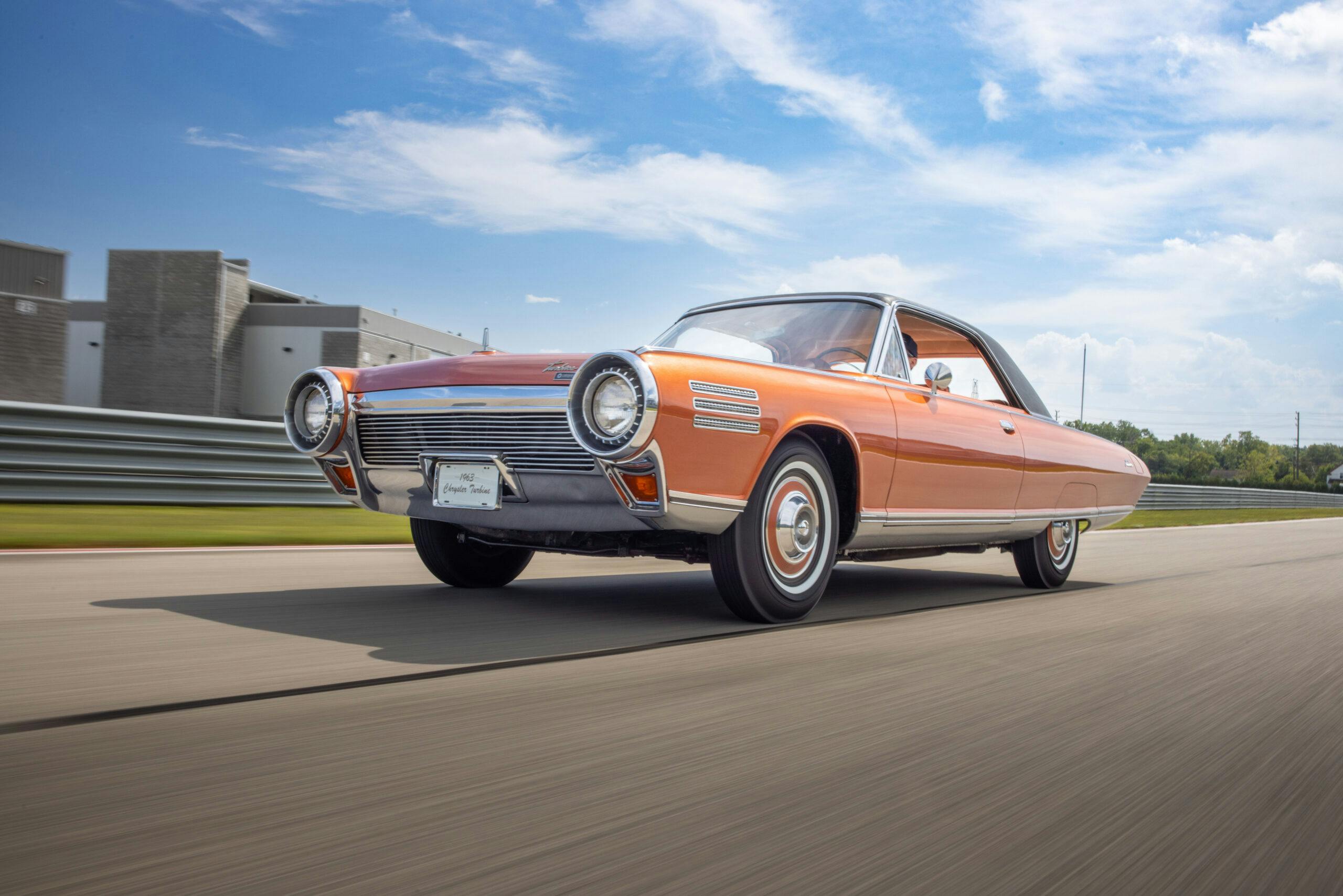
My father, Aaron Eisenberg, was a auto reupholstery specialist. He passed away in 1965. He did roll and pleat seats, Mercedes padded convertible tops, boat cushions and the walls in our basement rec room in Brooklyn , New York. In the late 1990s, my family was in Detroit for a wedding. We visited the Ford Museum where there was a perfect example of the Chrysler Turbine Car. My father was the man that Chrysler hired to create the interiors. or at least that’s what I’ve been told. That’s my story and I’m sticking to it.
One of your best and one of my favorite article. “The Turbine Car.” Thanks to all those who helped it happen. For their heart, their mind, their passion, to create the soul of this unique creation. These individuals possessed that unique quality that is so lacking in these times today. And they had fun doing it. Thank-you.
Chrysler provided a test turbine car to my mother-in-law in Birmingham, MI for a three month period. She was a great person, but she was the least mechanically-inclined person in the free world. Chrysler’s thinking was that if she could operate it, virtually anybody else could. She liked the car and only had one issue with it. A large number of people would congregate outside of her Rochester Hills, Michigan beauty parlor on Saturday morning and would ask her all sorts of technical questions about the car. This made her late for her weekly appointment, and her beauty operator was not pleased with her. But my mother-in-law would just tell people that it was called the Chrysler turbine car, and that’s about all she knew about it.
My family was chauffeured through the New York Worlds Fair in a Chrysler Turbine Car back in 1964. We were given this VIP ride through my father’s friendship with then Chrysler Vice President for Domestic Operations Virgil E. Boyd, who later headed Chrysler Corp. as president.
During our Worlds Fair tour, the Turbine Car attracted considerable attention and at one point, we parked in front of an admiring crowd. The driver opened the hood and balanced a nickel on its edge in the engine compartment while revving the turbine. Oohs and aahs filled the air as the coin remained in its vehicle position as the turbine whined with no noticeable vibration. I recall Chrysler had a special Turbine Car on display in its Worlds Fair pavilion auditorium that was a metallic silver in color and topless. Several onlookers gasped during car’s presentation, “Look, a new Ford Mustang!” Even as a 13-year-old, I shook my head in disbelief.
The nickel balancing on the engine must have been a standard Chrysler demonstration. I saw it done when the engineering team brought a turbine powered Dodge, or Plymouth, (Don’t remember which) to the local Chrysler dealership in Superior, Wisconsin for display. The crowd in the showroom 60 years ago was impressed and it left a lasting memory with me.
The documentary is great. It’s good to see the living engineers getting another chance to keep parts going for this. Of all the cars of that era I think I love the turbine the most just for the way they were trying to push the engineering envelope. It just doesn’t feel like that level of craftsmanship and engineering is possible today. In the 50’s and 60’s nothing seemed impossible.
Ugghhhh… Your comment is awaiting moderation.
Super glue
Since it’s still sitting in limbo. What a useless “community” forum this is.
The documentary is great. It’s good to see the living engineers getting another chance to keep parts going for this. Of all the cars of that era I think I love the turbine the most just for the way they were trying to push the engineering envelope. It just doesn’t feel like that level of craftsmanship and engineering is possible today. In the 50’s and 60’s nothing seemed impossible.
I saw one of the cars when I was 11 years old. It was at an “Industrial Fair” at the Torrington Company in Torrington CT. to celebrate their upcoming 100th anniversary. They had the fair and an open house in October 1965 and displayed all kinds of futuristic stuff like missiles, farm equipment, cars and trucks that used Torrington made bearings and other things. It was fun to see the insides if the factories, but the best part to my eyes, was the Chrysler Turbine Car.
The Torrington Company is no more. The place where this took place sat idle for many years, and in recent years demolition has started. The factories date to 1906 and made bicycle and auto wheel spokes, sewing machine needles, tires, and eventually bearings.
A great number of people got to try one as they built a small oval track at the 64, 65 World Fair. I was 26 then so able to try one.
I saw one being driven in Dekalb Illinois when I was in university. Almost as cool as seeing Little Oscar’s Weinermobile in Freeport Illinois when I was twelve.
I would encourage everyone to spend the time watching the short documentary that Hagerty produced. Very informing and extremely well done. Kudo’s to Hagerty.
I saw & heard one on City Line Avenue in Philadelphia .What a sound ! I was 17 . It sure was cool & so much nicer than my 53 Ford that I bought for $75. I do have a 1/18 scale model of the Turbine car & a 53 Ford Convertible for great memories. Mine was a humble Customline 2 door.
I lived just outside the city of Detroit in Madison Heights (12mile and JohnR) in the late 1950’s. It was a great place to see and live. It was a time when the city was alive and vibrant. It was a place where everywhere you went there were signs of the wealth the car industry brought to the city, It was a great time for Detroit and America.
Like several others, I had one pull up along side of me while driving my 1958 Impala around the time they had one in the Los Angels area. Looked really good and sounded different when it took off from the light. Unfortunately I was making a right turn, so I didn’t get to see it very long.
Seems like I do remember my Dad taking me to a St. Louis Chrysler-Plymouth Dealership one evening in 1962 where Chrysler Corp. had “running” ’62 Plymouth and ’62 Dodge TURBINE Cars w/ slightly re-designed sheet metal front and rear. They were sitting on the showroom floor under lights and it was a fairly big event. Both were painted a beautiful pearl WHITE color.
Was I a goofy dreaming little “car kid”, or could that be true ?
Cool car. Jay Leno says that it accelerates like a 318 B-body Mopar. One comment regarding the color. Turbine bronze was used on other Mopars through the 1960s. I had a friend with a turbine bronze 66 Dodge Monaco 500 and another friend who still owns a 68 Dodge Charger R/T. It was used more than just on this Turbine car and on the 2013 Chrysler 300.
My dad bought a Coronet station wagon in 1970. It was a very similar factory bronze color.